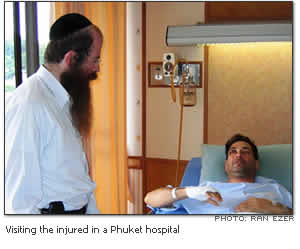
Life in the Netherlands
Pillarisation (Verzuiling in Dutch, Pilarisation in French) is a term used to describe the denominational segregation of Dutch and Belgian society. These societies were (and in some areas, still are) "vertically" divided in several smaller segments or "pillars" (zuilen, singular: zuil) according to different religions or ideologies, which operate separately from each other in a non-racial form of apartheid.
These pillars all had their own social institutions: their own newspapers, broadcasting organisations, political parties, trade unions, schools, hospitals, building societies, universities, scouting organisations and sports clubs. Some companies even only hired personnel of a specific religion or ideology. This led to a situation where many people had no personal contact with people from another pillar.
Austrian, Northern Irish, Israeli and Maltese societies were or are other examples of this phenomenon.
Abortion
Drug policy
Euthanasia
Prostitution
Same-sex marriage
Pillarisation
 Situation in the Netherlands
Situation in the NetherlandsIn the Netherlands there were (at least) three pillars: Protestant, Catholic and Social-democratic. Almost all Catholics were part of the Catholic pillar. Orthodox and conservative Protestants joined the Protestant pillar, while more latitudinarian Protestants and atheists either joined the Socialist pillar or were pillarless. The Protestant party Christian Historical Union did not organise a pillar of its own but linked itself to the Protestant pillar shaped by the Anti Revolutionary Party. Pillarisation was originally initiated by the Anti Revolutionary Party, who based it on their philosophy of sphere sovereignty. People in the Socialist pillar were mainly working class. People who were not associated with one of these pillars, mainly middle and upper class latitudinarian Protestants and atheists set up their own pillar: the general pillar. Ties between general organisations were much less strong. The political parties usually associated with this pillar were the liberal Free-minded Democratic League (VDB) and Liberal State Party (LSP), although these parties opposed pillarisation. Communists and ultra-orthodox Protestants also set up similar organisations, these however were much smaller.
The following table shows the most important institutions per pillar:
After the second world war liberals and socialists, but also Protestants and Catholics began to doubt the pillarised system. They founded a unity movement, the People's Movement Nederlandse Volksbeweging. Progressives of all pillars (including the Catholic resistance movement Christofoor) were united in this. They wanted a breakthrough (doorbraak) of the political system. But pillarisation was ingrained in Dutch society, and could not be defeated that easily. Even the People's Movement suffered from this, it was associated with the socialistic party, SDAP, and its ideology was socialism combined with democratic principles. Only the left liberal VDB and the minor Protestant CDU joined the SDAP to form a new political party: the Labour Party, Partij van de Arbeid in 1946.
During the 1960s these pillars, particularly under political criticism from D66 and the group Nieuw Links (New Left) in PvdA, largely broke down. For example, VPRO moved towards the general pillar in years. Television was also pillarised, but in its early years (the 1950s) it had only one station, which meant that everyone watched the same broadcasts. Young people did not want to be associated with these organisations. Because of this and increased mobility many people saw that people from the other pillar weren't that different. Increased wealth and education made people independent of many of these institutions. From 1973, ARP and CHU of the Protestant pillar united with Catholic KVP in CDA, they first entered in elections in 1977. From 1976, the Catholic trade union NKV cooperated with NVV of the Socialist pillar to merge into the FNV in 1982.
By the 21st century, pillarisation has disappeared but many remnants can be seen: public television for instance is divided over several pillarised organisations, instead of being one organisation, as is the education system split between public and religious schools. Nevertheless, there are small pillars that still exist today. Usually, members of the Reformed Churches (liberated) have their own schools, a university, their own national newspaper, and several organizations such as a Labor Union, psychiatric hospitals, et cetera. "Parallel society" founded by Muslim immigrants in the Netherlands is also sometimes conceived as a contemporary vestige of pillarisation.
No comments:
Post a Comment